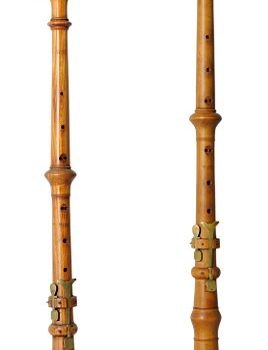The name oboe comes from the word Hoboe. This is a phonetic paraphrase of the French term Le Hautbois, meaning high wood (instrument).
Oboe
Construction
The instrument consists of three parts, the top piece, the centre piece, and the bell and has a conical bore. Since the Baroque period, the oboe has been steadily expanded and refined and has become an indispensable orchestral instrument. In addition to the classic oboe, a number of other variants were developed. These include, among others, the oboe d’Amore in A, and the alto oboe in F, from which the English horn developed.
Use in Music
Early in the 18th century the oboe began to be constructed in its present form. It consisted of a wooden joint and a sound bell. A double reed was used to generate the sound. The mouthpiece of the oboe was originally made from the same wood as the instrument, but later it was increasingly made from horn.
The Heckel oboe, Heckel oboe d’Amore and the Heckel English horn were made in two basic types, the Heckel bore or the conservatoire bore. They range in depth to B2, or even to B♭.
The last Heckel oboe was made in 1971. Among the oboe-like Heckel instruments are the heckelphone in C and the piccolo heckelphone in F.
